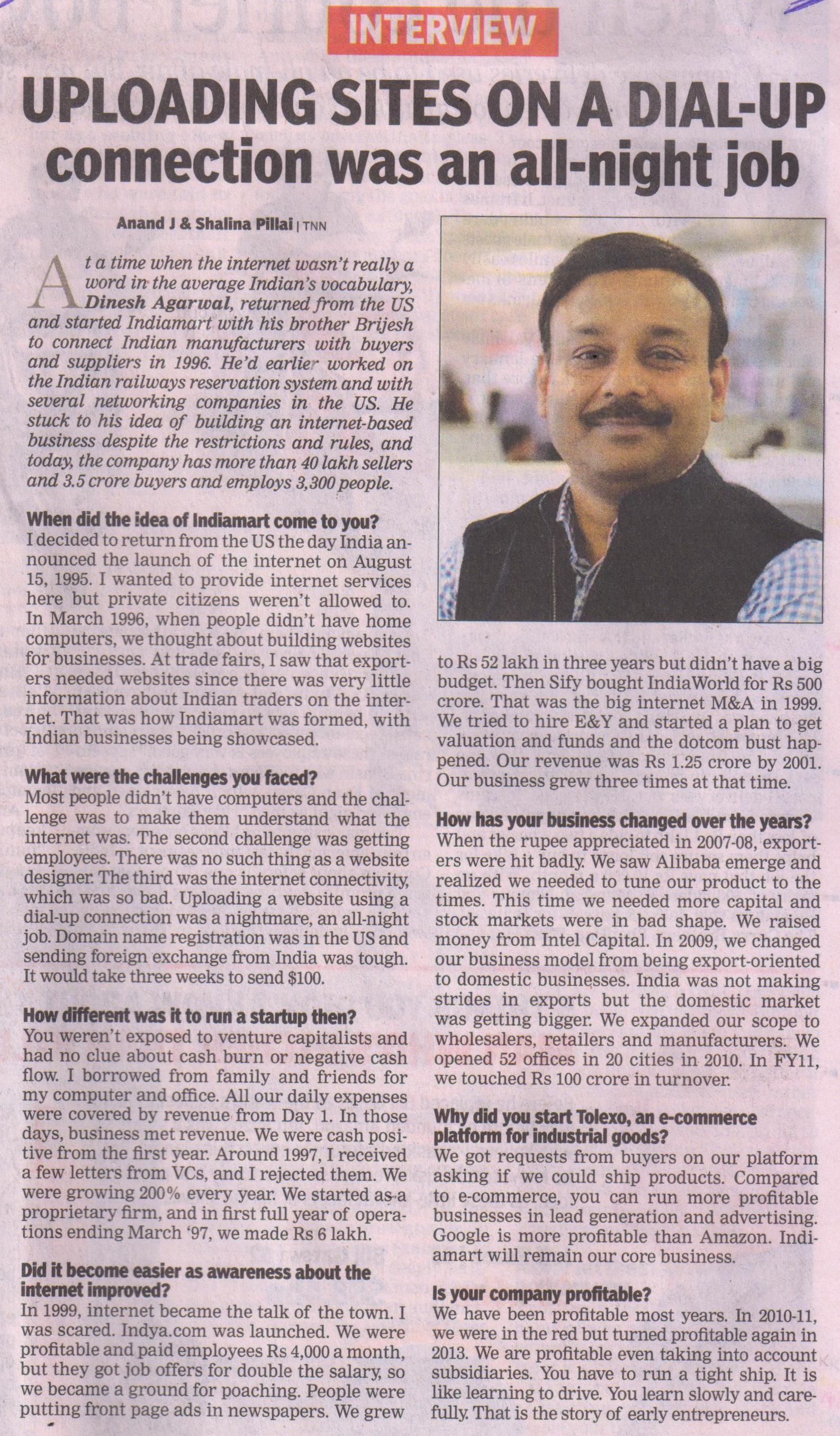
At a time when the internet wasn’t really a word in the average Indian’s vocabulary, Dinesh Agarwal, returned from the US and started Indiamart with his brother Brijesh to connect Indian manufacturers with buyers and suppliers in 1996. He’d earlier worked on the Indian railways reservation system and with several networking companies in the US. He stuck to his idea of building an internet-based business despite the restrictions and rules, and today, the company has more than 40 lakh sellers and 3.5 crore buyers and employs 3,300 people.
When did the idea of Indiamart come to you?
I decided to return from the US the day India announced the launch of the internet on August 15, 1995. I wanted to provide internet services here but private citizens weren’t allowed to.In March 1996, when people didn’t have home computers, we thought about building websites for businesses. At trade fairs, I saw that exporters needed websites since there was very little information about Indian traders on the internet. That was how Indiamart was formed, with Indian businesses being showcased.
What were the challenges you faced?
Most people didn’t have computers and the challenge was to make them understand what the internet was. The second challenge was getting employees. There was no such thing as a website designer. The third was the internet connectivity, which was so bad. Uploading a website using a dial-up connection was a nightmare, an all-night job. Domain name registration was in the US and sending foreign exchange from India was tough.It would take three weeks to send $100.
How different was it to run a startup then?
You weren’t exposed to venture capitalists and had no clue about cash burn or negative cash flow. I borrowed from family and friends for my computer and office. All our daily expenses were covered by revenue from Day 1. In those days, business met revenue. We were cash positive from the first year. Around 1997, I received a few letters from VCs, and I rejected them. We were growing 200% every year. We started as a proprietary firm, and in first full year of operations ending March `97, we made Rs 6 lakh.
Did it become easier as awareness about the internet improved?
In 1999, internet became the talk of the town. I was scared. Indya.com was launched. We were profitable and paid employees Rs 4,000 a month, but they got job offers for double the salary, so we became a ground for poaching. People were putting front page ads in newspapers. We grew to Rs 52 lakh in three years but didn’t have a big budget. Then Sify bought IndiaWorld for Rs 500 crore. That was the big internet M&A in 1999.We tried to hire E&Y and started a plan to get valuation and funds and the dotcom bust happened. Our revenue was Rs 1.25 crore by 2001.Our business grew three times at that time.
How has your business changed over the years?
When the rupee appreciated in 2007-08, exporters were hit badly. We saw Alibaba emerge and realized we needed to tune our product to the times. This time we needed more capital and stock markets were in bad shape. We raised money from Intel Capital. In 2009, we changed our business model from being export-oriented to domestic businesses. India was not making strides in exports but the domestic market was getting bigger. We expanded our scope to wholesalers, retailers and manufacturers. We opened 52 offices in 20 cities in 2010. In FY11, we touched Rs 100 crore in turnover.
Why did you start Tolexo, an e-commerce platform for industrial goods?
We got requests from buyers on our platform asking if we could ship products. Compared to e-commerce, you can run more profitable businesses in lead generation and advertising.Google is more profitable than Amazon. Indiamart will remain our core business.
Is your company profitable?
We have been profitable most years. In 2010-11, we were in the red but turned profitable again in 2013. We are profitable even taking into account subsidiaries. You have to run a tight ship. It is like learning to drive. You learn slowly and carefully. That is the story of early entrepreneurs.

